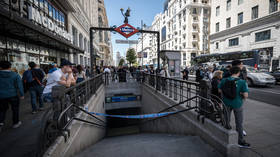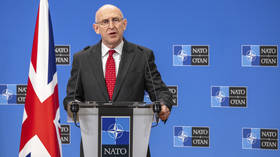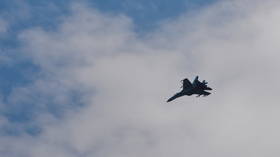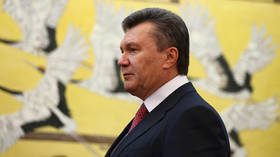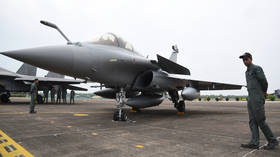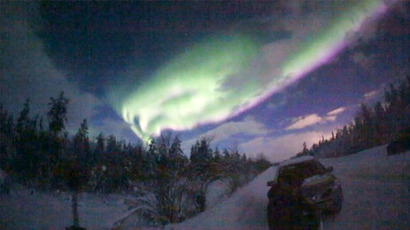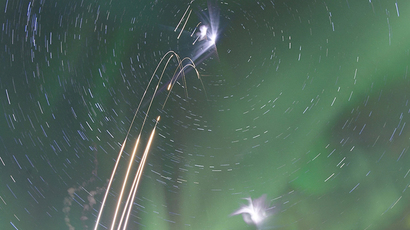Northern Lights move south: Magnetic storm reveals aurora borealis in Central Russia
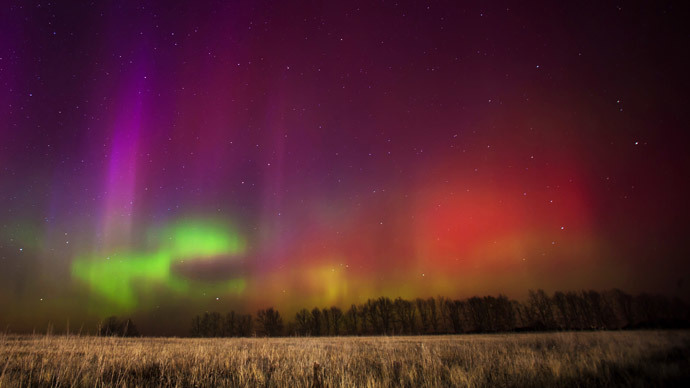
An abnormal atmospheric phenomenon was visible throughout the relevantly low latitude of central Russia, including Moscow and St. Petersburg on Tuesday. A powerful geomagnetic storm promises to continue for a second day, also including an aurora.
Witnesses and amateur astronomers have been busily posting photos and videos of this atmospheric event - so rarely seen in Central Russia - on blogs and social media.
READ MORE: Amazing Aurora Borealis lights up skies above US, Russia (VIDEO, PHOTOS)
As a rule, the aurora borealis is visible in regions close or above the Polar Circle, for example in Russia’s Arctic city of Murmansk.
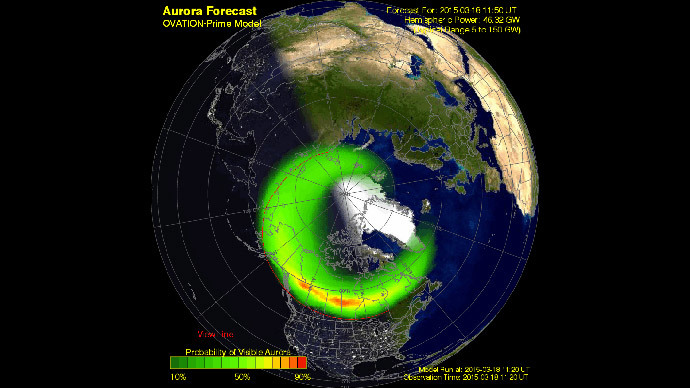
But sometimes extremely powerful solar flares cause this atmospheric phenomenon to be visible in much lower altitudes, as is the case now.
Auroras on the North and South Poles of our planet are caused by solar winds, when charged particles such as electrons and protons enter and exit the gases of Earth’s atmosphere, thus causing ionization, which manifests in optical emissions.
Russia’s Institute of Applied Geophysics reported that geomagnetic field disturbance began at about 13:00 GMT on Tuesday.
According to the Laboratory of X-ray Astronomy of the Sun, geomagnetic field variations were surging throughout the day.
Russia's weather forecasting service says the geomagnetic field disturbance is set to continue for two more days.
READ MORE: Stunning skies of bright greens: Aurora borealis illuminates Russia's north (PHOTOS, VIDEOS)
#Россия #Знамения В Москве - горела колокольня Новодевичьего монастыря. В Питере - северное сияние... via katerin_fox pic.twitter.com/pWUJbIsSOp
— Igor Zubkov ㋡ (@IgorZ_ua) March 17, 2015
“The areas with highest probability of [seeing] the aurora borealis are the north of Eurasia, including Scandinavia and the northern part of the Baltic Sea,” the forecasters said.
Жители #НН наблюдали редкое природное явление - полярное сияние. Фоторепортаж. http://t.co/SExWEig47Epic.twitter.com/DulwZqy5vN
— НИА Нижний Новгород (@NIA_NN) March 18, 2015
Residents of Moscow and St. Petersburg are likely to see the Northern Lights for a second night.
Северное сияние в Архангельске, Россия pic.twitter.com/pDk786j3i7
— fatona91 (@fatona91) March 17, 2015
The previous night unusual polar lighting was easily visible in many cities across the Central Russia, including Arkhangelsk, Bryansk, Ivanovo, Kazan, Nizhny Novgorod, Petrozavodsk, Tula, Vologda and Ekaterinburg, and in neighboring Belarus.
#Россия #великая #страна#северное #сияние вчера по всей средней полосе России люди могли… http://t.co/Hmk3lQRL2Fpic.twitter.com/alSPiGhgP2
— Фото из Ярославля (@instaYaroslavl) March 18, 2015
Северное сияние на реке Поньгома, Карелия, Россия. http://t.co/MCqnh9XJcZpic.twitter.com/7gYzpjGN4r
— Саша Соколов ФотоТур (@FotoTravelAlexS) March 17, 2015





